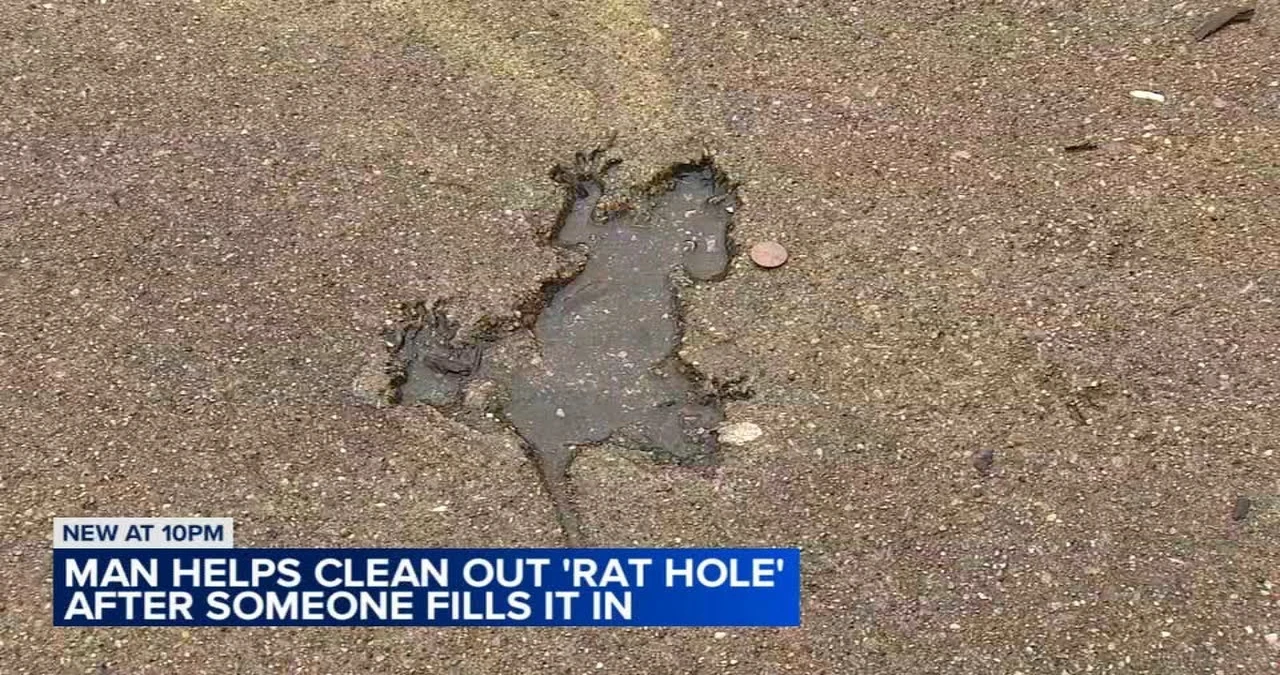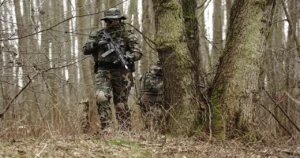The Chicago Rat Hole: Unraveling the Mystery Behind One of the City’s Most Notorious 1Urban Legends

The Chicago Rat Hole
The Chicago Rat Hole: Chicago has long been a city of fascination, where the blending of history, culture, and crime has created a complex and ever-evolving urban landscape. But amidst all the intrigue, one name continues to pique the curiosity of locals and outsiders alike: The Chicago Rat Hole. What exactly is it? Is it real? How did this infamous landmark become such an enduring part of the city’s lore?
In this article, we will dive deep into the myth, mystery, and truth behind the Chicago Rat Hole. We will look at the history, the urban legends, and how this iconic name has evolved in the collective imagination. From dark alleys to hidden spaces, the Chicago Rat Hole is as much a part of the city’s story as its towering skyscrapers and famous architecture.
What is the Chicago Rat Hole?
When the name “Chicago Rat Hole” is mentioned, it often conjures up images of dark, dank tunnels and long-forgotten corners of the city. It’s a name that hints at both mystery and menace, sparking the imagination with visions of hidden spaces underneath the city’s bustling streets. But what exactly is the Rat Hole, and how did it come to occupy such a prominent place in urban legend?
The Chicago Rat Hole isn’t necessarily a single, physical location. Rather, it refers to a network of subterranean spaces and forgotten parts of the city that have become infamous for their association with crime, secrecy, and decay. These spaces are often located beneath the city’s streets or within abandoned buildings. They are places that are off the beaten path, hidden from the public eye, and shrouded in mystery.
Over time, stories have emerged of various underground locations referred to as the “Rat Hole.” Some believe it to be a series of tunnels used by criminals for illicit activities. Others speculate that it may be a leftover relic from Chicago’s past when the city was more chaotic, filled with gang activity, and less regulated. The name itself, with its association with rats, evokes an image of a filthy, unsafe, and perhaps even dangerous space.
While it’s difficult to point to one specific location as the “official” Chicago Rat Hole, the name has come to represent the darker, forgotten corners of the city where only the bravest—or most foolish—dare to venture.
The Origin of the Name: How Did It Come to Be?

The term “Chicago Rat Hole” likely arose during the Prohibition era, a time when crime, corruption, and secrecy ran rampant throughout the city. As gangs controlled large parts of Chicago, they required hidden spaces to conduct their operations away from prying eyes. It was during this time that the city saw an explosion of illegal speakeasies, backroom gambling dens, and underground tunnels used for everything from bootlegging to hiding from the law.
The name “Rat Hole” was probably a colloquial term used to describe these dingy, poorly-maintained places. Given the association with rats, which are commonly found in dark, unsanitary spaces, the name immediately conveyed a sense of danger and decay. It also symbolized a place that was hidden from the public eye, a space where only the most desperate or devious individuals might go.
Some urban legends suggest that the Rat Hole was a central meeting point for notorious figures like Al Capone and other members of Chicago’s infamous criminal underworld. This connection to organized crime further cemented the Rat Hole’s place in the public imagination as a dark and dangerous location.
The Role of the Chicago Rat Hole in Local Lore
The Chicago Rat Hole has become more than just a physical space—it’s a piece of the city’s mythology. Over time, it has evolved from a grim part of the city’s past into a symbol of mystery and the unknown. Chicago’s residents and visitors alike have come to embrace the Rat Hole as a part of the city’s lore, despite its somewhat ominous connotations.
The Rat Hole has become so embedded in Chicago’s cultural fabric that it is often mentioned in local ghost stories, paranormal investigations, and conspiracy theories. Some people claim that the underground tunnels are haunted by the spirits of those who were murdered or who perished in gangland conflicts. Others believe the Rat Hole is a site for secret meetings, where Chicago’s wealthiest and most powerful individuals gather in the shadows.
One theory that has persisted for years is that the Rat Hole may be the location of hidden treasure—possibly stashed by Capone himself or other criminal figures who operated in the city. Over time, the legend of the treasure grew, adding an element of adventure and mystery to the already intriguing narrative of the Rat Hole.
The name has even made its way into popular culture, with references appearing in films, books, and television shows that seek to capture the gritty, noir atmosphere of 1920s and 1930s Chicago. In this way, the Rat Hole has come to represent not just a part of the city’s history, but also a larger-than-life symbol of the dangerous allure of the Windy City.
Chicago’s Underworld and the Chicago Rat Hole Connection
Chicago’s underworld is one of the most well-known in American history. From its earliest days as a settlement to its rise as an industrial powerhouse, the city has always had a darker side. During the Prohibition era, this darker side exploded into the public consciousness as criminal organizations like the Chicago Outfit controlled much of the city’s illegal activities.
The Rat Hole is often associated with this underworld activity. Many believe that the tunnels and hidden spaces beneath the city were used by gangsters to move alcohol, evade the police, and hide from rival gangs. While the exact layout of these tunnels remains unknown, it is widely speculated that the Rat Hole was connected to these underground operations.
In addition to bootlegging and illegal alcohol distribution, the Rat Hole may have also been used for gambling, extortion, and even human trafficking. The very nature of these activities required secrecy, and the dark, confined spaces of the Rat Hole provided the perfect environment for such illicit dealings.
As Chicago’s organized crime scene continued to evolve throughout the 20th century, so too did the lore surrounding the Rat Hole. It became a symbol not just of crime, but of the city’s ability to thrive in secrecy, hidden from the public eye. Even today, the connection between the Rat Hole and Chicago’s criminal past continues to fuel stories and legends about what might still be hidden beneath the city.
The Chicago Rat Hole Today: Does It Still Exist?
Given the enduring nature of the legend, one might wonder: Does the Chicago Rat Hole still exist today? While the name may conjure up images of underground caverns and dark passageways, the reality is that many of the locations associated with the Rat Hole have long been lost to time.
It’s possible that some remnants of these hidden spaces still exist beneath the streets of Chicago, though they may be inaccessible or forgotten. The city’s infrastructure has undergone significant changes over the years, with old tunnels being sealed off or repurposed. In some cases, these underground areas may have been rediscovered during construction projects, though their significance remains unclear.
In recent years, however, there has been a renewed interest in the Rat Hole and Chicago’s forgotten spaces. Urban explorers, historians, and even ghost hunters have ventured into the city’s abandoned buildings and hidden corners, hoping to uncover the truth about the Rat Hole’s existence. Some claim to have found clues—old, forgotten entrances to tunnels, for instance—that suggest the legend may have a basis in reality.
While it’s unlikely that the Chicago Rat Hole remains the bustling hideout it once was, its legacy endures in the collective imagination of the city’s residents. Whether or not any physical remnants of the Rat Hole still exist, the myth and the stories surrounding it continue to thrive, adding to the rich tapestry of Chicago’s urban legends.
The Chicago Rat Hole in Popular Culture
The Chicago Rat Hole has not only made its mark on local history but also on popular culture. Over the years, various writers, filmmakers, and artists have used the Rat Hole as inspiration for their work. The dark, mysterious nature of the legend provides an ideal backdrop for stories of crime, intrigue, and conspiracy.
In films and television shows set in Chicago, references to the Rat Hole are often made to evoke the gritty, dangerous atmosphere of the city during the early 20th century. Whether it’s a shady backroom poker game or a covert meeting between mobsters, the concept of the Rat Hole has been woven into the fabric of Chicago-based storytelling.
Beyond the realm of entertainment, the Rat Hole also finds its place in the world of urban exploration. Chicago has become a hotspot for those who wish to explore its abandoned buildings, hidden tunnels, and forgotten spaces. For many, the idea of discovering a piece of the city’s hidden past—whether it be an entrance to the Rat Hole or a forgotten underground speakeasy—is an enticing adventure.
In this way, the Chicago Rat Hole lives on, not only as a part of the city’s history but also as a symbol of the mystery and allure that continues to draw people to the Windy City.
Conclusion: The Lasting Legacy of the Chicago Rat Hole
The Chicago Rat Hole may be a physical space that’s hard to pin down, but its legacy is undeniable. From its origins in the shadowy world of Chicago’s criminal underworld to its current status as a piece of the city’s urban mythology, the Rat Hole represents a fascinating intersection of history, mystery, and intrigue.
Whether it’s real or simply a product of Chicago’s rich storytelling tradition, the Rat Hole continues to captivate the imagination of those who seek to uncover the secrets hidden beneath the city’s surface. Its legacy serves as a reminder of the darker side of Chicago’s past and the enduring power of urban legends to shape our understanding of a city.
As long as the stories continue to be told, the Chicago Rat Hole will remain an essential part of the city’s complex and captivating identity.



